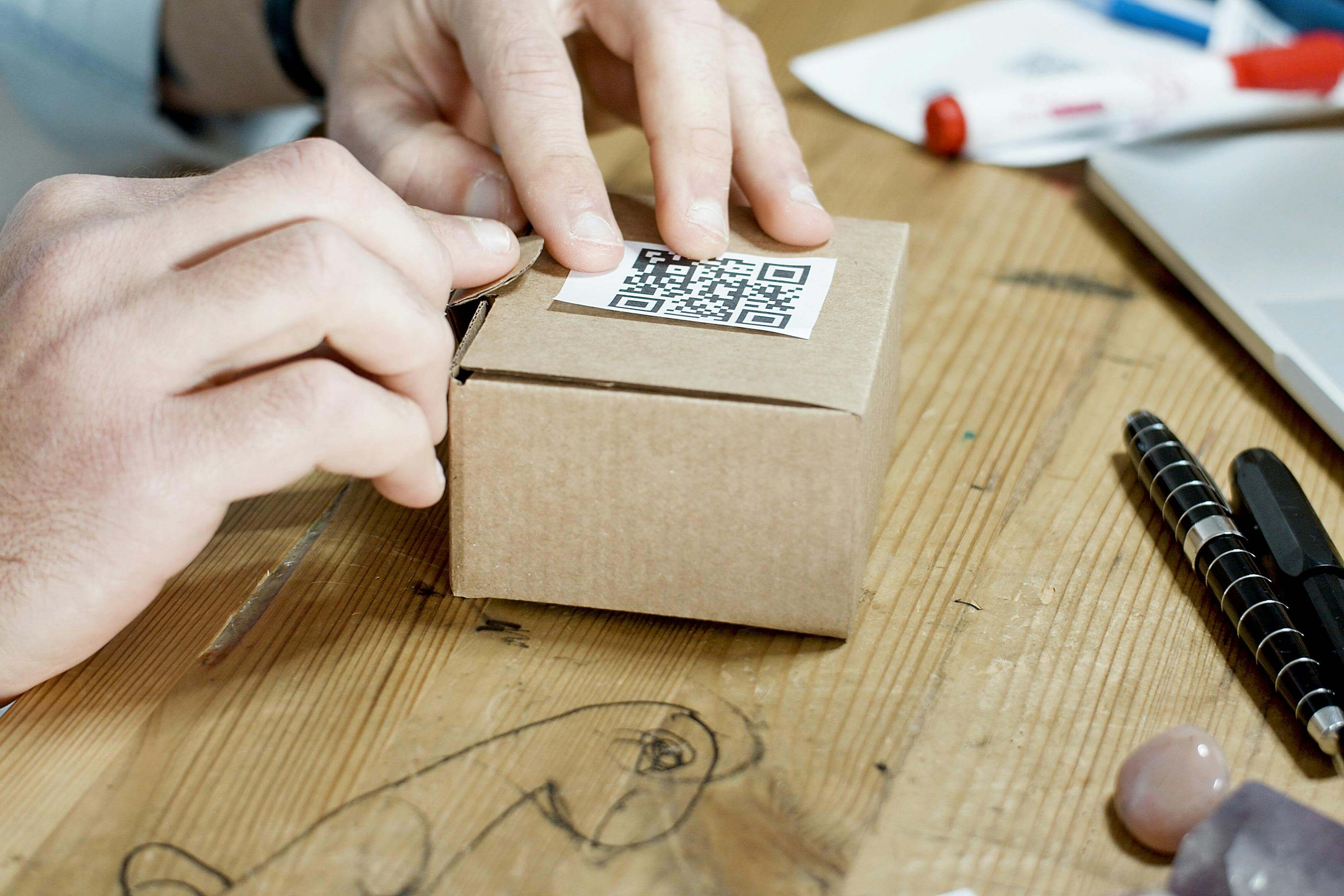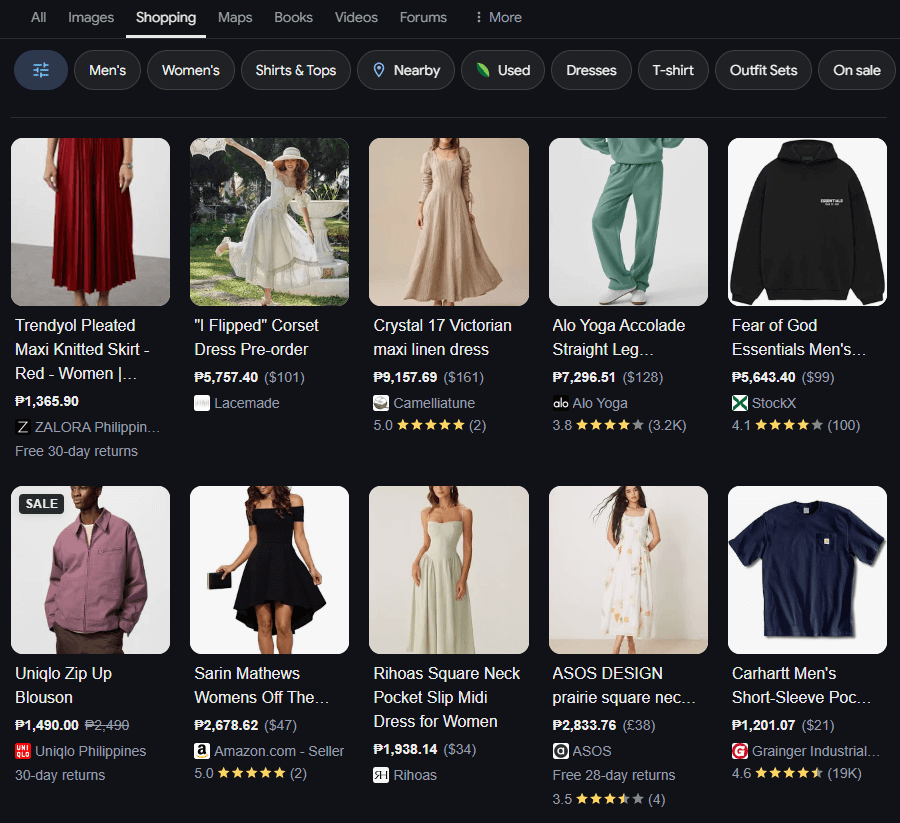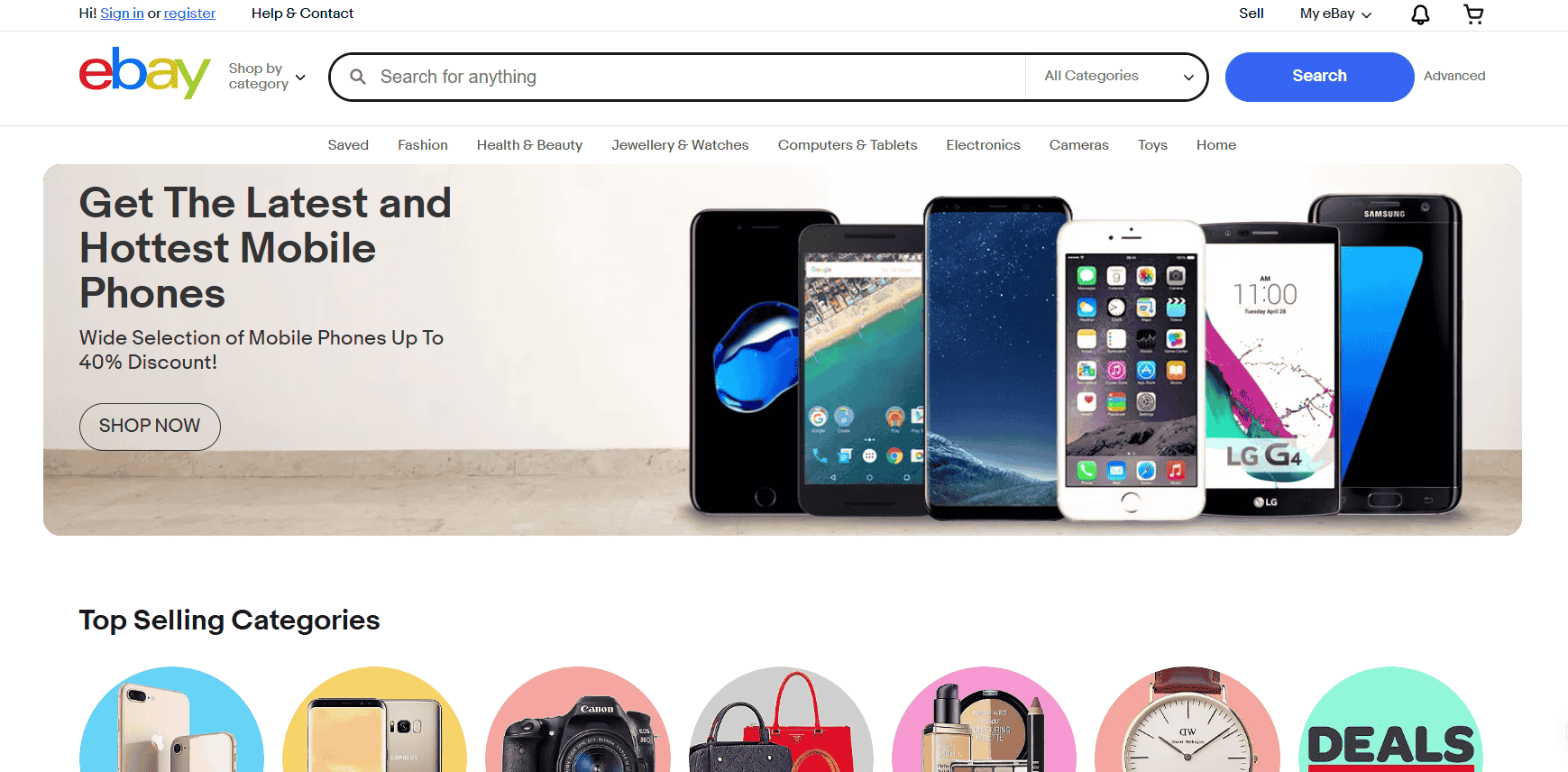On an episode of the Club Shay Shay podcast, Shannon Sharpe asked billionaire entrepreneur Mark Cuban what advice he’d give NBA players about how to spend their money.
Mark didn’t hold back. He offered some straightforward advice, and one part in particular raised a few eyebrows. He said, “Don’t invest in the restaurant. Don’t invest in the clothing label. Don’t invest in the liquor company… or music. That is death… Those businesses are hard because there’s no barrier to entry.”
Naturally, a lot of aspiring online sellers who watched that clip were surprised. Some probably thought, “Wait—don’t invest in clothing?” A few may have even second-guessed their plans and pivoted to another niche.
-
Starting an online clothing store is still profitable if you choose a niche, build a brand, and focus on strategy—not celebrity status.
-
You don’t need a huge budget to launch; print-on-demand or dropshipping models can help you start lean and scale over time.
-
Quality matters—order samples, test your products, and make sure your clothing feels as good as it looks.
-
A strong brand identity, clear website, and smart marketing (like TikTok and email lists) can turn browsers into loyal customers.
-
Don’t wait for everything to be perfect—launch, learn, and adapt quickly based on real customer feedback.
But here’s the thing: Mark Cuban wasn’t wrong. He was just talking about a specific kind of investment.
What he meant is that if you’re going to pour millions into a clothing label without a clear strategy, thinking your name alone will carry it, you’re probably going to lose money.
The fashion industry has one of the lowest barriers to entry. Anyone with Wi-Fi and a decent design can launch a clothing brand overnight. That means it’s saturated, competitive, and incredibly unforgiving if you don’t know what you’re doing.
But for smart online sellers? It’s still one of the most profitable niches out there.
According to Statista, global revenue in the fashion ecommerce market is projected to reach $1.2 trillion by the end of 2025, and apparel remains the largest segment.
Online clothing stores continue to thrive, especially those that focus on niche audiences, ethical sourcing, limited drops, or offer strong storytelling and brand identity.
The difference lies in the approach. You don’t need celebrity backing or a physical showroom. What you need is a clear niche, the right business model, an optimized online storefront, and a way to connect emotionally with your customers.
When done right, even a one-person clothing brand can carve out loyal buyers and consistent profits.
In fact, many of my past clients—people who started with just a few designs and a Shopify store—now generate steady five- or six-figure monthly revenue. They didn’t start big. They started smart.
So if you’ve been dreaming about launching your own clothing brand, don’t let a soundbite discourage you. Let it challenge you to do it better.
This guide will walk you through exactly how to start your own online clothing store in 2025, from choosing your niche to launching your first collection. Let’s make your fashion business not just one of the many, but one that actually makes money.
Find Your Niche and Know Your People
Before you even design a logo or pick a domain name, ask yourself: Who are you selling to?
The most successful online boutiques don’t try to sell to everyone. They find a niche and own it. It could be sustainable basics for Gen Z, retro streetwear for sneakerheads, or size-inclusive business wear for curvy professionals.
If you try to please everyone, you’ll get lost in the noise. And trust me, the fashion space is already loud.
Choosing a niche isn’t about limiting yourself. It’s about creating instant clarity for your ideal customer. When someone lands on your site and thinks, “This is exactly what I’ve been looking for,” you’ve already won half the battle.
Your niche helps shape your product selection, your branding, your voice, and even your pricing.
I once worked with a client who sold handmade boho skirts. She was passionate, had beautiful products, but sales were flat. After digging into her analytics and customer feedback, we narrowed her brand focus to “ethical festival fashion.”
That one shift changed everything. Her audience tripled, her bounce rate dropped by 40%, and her social media engagement skyrocketed because her store finally spoke directly to the people who cared. The ones who cared about sustainability, self-expression, and having the perfect outfit for Coachella.
When you nail your niche, everything else becomes easier—product development, marketing, even customer service. So don’t rush this part. Get clear. Get specific. And get ready to attract the right people, not just more people.
Pick a Clothing Business Model That Actually Works for You
The fashion ecommerce world isn’t one-size-fits-all, especially when it comes to how you run your business behind the scenes. The right business model can make or break your online clothing store, especially in the beginning when every dollar counts and every decision feels like a gamble.
There are four main business models in fashion ecommerce, and each one has its pros, cons, and ideal starting points:
- Print-on-Demand (POD): You design; a third-party prints and ships. This is perfect if you’re just starting out and want to sell T-shirts, hoodies, or graphic merch without holding any inventory. You don’t need a warehouse, just a laptop and some creative ideas. The trade-off? Lower profit margins and less control over fulfillment speed or quality.
- Dropshipping: No inventory, no upfront product costs. You list products from a supplier’s catalog and only pay when someone orders. It’s a solid option for testing trends and styles, but keep in mind: you’re at the mercy of your supplier’s stock levels, shipping times, and product quality. Plus, margins are slim, so volume matters.
- Private Label: This gives you more control and brand power. You source blank items, customize them under your brand name, and usually buy in bulk. That means better profit potential but also higher startup costs and more responsibility for inventory, shipping, and branding.
- Cut and Sew: This is the most advanced route. You create fully custom pieces from scratch. It’s ideal for designers with a clear vision and serious plans to scale. Think high-quality fashion lines or signature collections. But it requires capital, time, and patience. Production can take months.
Each has its place, and here’s what I always tell clients: you don’t have to stick to one model forever. One of my clients started with POD just to test a few shirt ideas.
When one of her designs—a bold, feminist slogan tee—blew up on TikTok, she reinvested her profits into private label production to improve quality and increase her margins. That move alone doubled her revenue within two months.
So if you’re wondering which model is right for you, don’t overthink it. Pick the one that works for your budget, skills, and timeline. Start lean. Learn fast. Then pivot as your brand grows.
Write a Simple but Smart Business Plan
No, this doesn’t mean a 30-page document full of fluff. You don’t need to map out every tiny detail of your future empire. In fact, a one-page business plan is often enough to get you moving, and keep you focused. It’s not about making it perfect. It’s about getting clear.
Start by defining what you’re selling and why it’s different. Are you offering size-inclusive streetwear? Gender-neutral basics? Upcycled denim with custom embroidery? Whatever it is, make sure it stands out. If it’s not unique, it better be really well executed.
Next, dig into who your customer is. And no, “millennials” or “people who like clothes” won’t cut it. Think specific. Maybe your ideal buyer is a 25-year-old office worker who shops secondhand, follows fashion creators on TikTok, and hates waiting more than three days for shipping. Knowing your customer inside and out shapes everything from your designs to your marketing.

Then, figure out how you’ll source or produce inventory. Will you use print-on-demand? Work with a local supplier? Dropship from overseas? Each option comes with trade-offs in cost, quality, and control, so choose what matches your budget and long-term goals.
You also need to know what your pricing and margins look like. Let’s say your cost per unit is $8 and you plan to sell it for $24. That sounds good on paper. But have you factored in your ad spend, shipping costs, packaging, platform fees, and inevitable returns? Because they’ll eat into that margin quickly if you’re not careful.
Don’t forget how you’ll market it. Are you leaning into TikTok trends, partnering with micro-influencers, or building an email list through a launch waitlist? Go where your audience already spends their time and speak their language.
And finally, be honest about how much you need to invest. Even lean businesses need capital whether it’s $200 for samples or $2,000 for your first production run. The clearer you are on your costs now, the fewer surprises you’ll face later.
When investors, mentors, or even friends ask about your idea, they’re not looking for a novel. They want to see that you’ve thought it through and that you’re serious.
A solid business plan isn’t just for them. It’s your personal roadmap. It helps you avoid shiny distractions, make smarter decisions, and measure progress without guessing.
Register Your Clothing Store Legally
This part isn’t sexy, but it’s necessary, and skipping it could cost you more than just fines. Registering your clothing store legally sets you up to operate like a real business, not just a side hustle.
It builds trust with suppliers, protects your personal assets, and makes it easier to apply for business credit or loans down the line.
In the U.S., here’s what you’ll likely need to do:
- Choose a legal structure – An LLC (Limited Liability Company) is the most popular choice for small brands because it’s affordable, protects your personal assets, and keeps things simple come tax time.
- Get an EIN (Employer Identification Number) – Think of this as your business’s Social Security number. You’ll need it to open a business bank account, file taxes, and hire contractors or employees.
- Open a separate business bank account – Mixing business and personal funds is a rookie mistake. Keep it clean. This makes bookkeeping way easier and keeps you out of trouble during tax season.
- Apply for a seller’s permit – This allows you to collect sales tax legally. Requirements vary by state, so check your local regulations.
Treat your store like a real business from day one, and it’ll return the favor. You’ll not only look more professional. You’ll be more confident when negotiating with manufacturers, running paid ads, or pitching your brand to influencers and collaborators.
Source Products That Don’t Suck
You’ve got a few routes here: suppliers (like Printful, Faire, or Alibaba), small-batch manufacturers, or local producers. Each has its pros and cons, but the one thing they all have in common? If you don’t vet them, they can tank your store before it even gets off the ground.
If you’re selling basics or POD items, platforms like T-Pop, SPOD, or Apliiq are worth a look. They offer eco-conscious options, custom branding features, and faster turnaround times than most overseas manufacturers.
That means you get to test and launch designs without overcommitting or overpaying. But—and this is a big one—always order samples before going live.
I don’t care how slick the product images look or how many 5-star reviews they’ve racked up. What looks great online might feel cheap or fall apart after one wash.
One of my clients learned this the hard way. She launched her brand with a trendy crop top from a supplier she found through a marketplace and skipped the sampling step to save time.
Within the first month, she got hit with a flood of returns and refund requests—poor stitching, uneven hems, prints that faded after one wash.
It wasn’t just the money she lost. It was her credibility. Her first-time customers didn’t give her a second chance, and some even left negative reviews that hurt her future campaigns.
Don’t let that be you. When you’re sourcing products for your online clothing store, quality control isn’t optional. It’s your brand’s first impression, and possibly its last if you get it wrong.
Take the time to test, wear, wash, and compare. Because selling clothing that looks good but feels cheap? That’s a fast track to a slow, painful flop.
Build Your Store Using Tools Made for Fashion Ecommerce
Shopify is the gold standard for launching an online boutique. You don’t need coding skills, and you’ll get access to apps for upselling, abandoned cart recovery, and integrations with Instagram and TikTok Shops.
That’s a big deal because these social platforms aren’t just for scrolling anymore. They’re full-blown shopping channels, and if your clothing brand isn’t connected to them, you’re already leaving money on the table.
I’ve helped clients set up stores with Shopify themes that took less than a weekend to launch. With the right plug-ins, they were collecting emails, automating abandoned cart follow-ups, and showcasing user-generated content without touching a line of code.
Make sure your website includes:
- A clean homepage with your brand story (this is where first impressions are made)
- A simple, visual shop layout that’s easy to navigate
- An about page that builds trust (show your face, your values, your mission)
- Clear sizing guides and a returns policy (reduces uncertainty and returns)
- Mobile optimization (over 70% of clothing sales now happen on mobile)
Speed and clarity win. If your site takes forever to load or looks cluttered, people won’t stick around. They’ll bounce and buy from a brand that makes shopping feel seamless.
Fashion ecommerce is visual by nature, so your store should feel like walking into a well-designed boutique, not digging through a bargain bin.
Build a Brand, Not Just a Store
People don’t buy clothes. They buy identity.
Think about it. When someone wears your product, they’re not just covering their body. They’re expressing something. A belief. A mood. A lifestyle. That’s why successful clothing brands don’t just slap logos on fabric. They tell a story. They stand for something.
Your brand should reflect something your audience cares about deeply. Whether that’s empowerment, nostalgia, rebellion, or sustainability, it needs to show up in everything, from your colors and fonts to your packaging and product tags.

Even the tone of your customer service emails should feel on-brand. If you’re targeting bold, outspoken women, for example, your voice should sound fearless and unfiltered, not like a robot reading a return policy.
I’ve worked with online sellers who completely transformed their sales just by realigning their visuals and messaging with their brand values. One client went from generic fashion pieces to a sharp focus on “90s Black Girl Nostalgia” and her engagement exploded. Her audience didn’t just buy. They related.
Jeff Bezos said it best: “Your brand is what people say about you when you’re not in the room.”
So don’t just focus on the products. Make your brand so clear and compelling that people feel like wearing your clothes says something about them. That’s when you stop being just another store—and start becoming the store.
Set Up Payments, Shipping, and Returns
Use trusted payment processors like Shopify Payments, PayPal, and Stripe. These give your customers familiar options at checkout, which builds trust and significantly reduces cart abandonment.
I’ve seen online sellers lose up to 20% of potential sales just because they didn’t offer PayPal. Don’t let that be you. Convenience wins.
Shipping? Keep it simple. Complicated shipping setups confuse customers and kill conversions. One of the most effective tactics I’ve seen is offering flat-rate shipping or free shipping on orders over a certain amount.
It not only boosts average order value but also gives buyers a reason to add that extra item to their cart. To make your life easier, use tools like ShipStation or Pirate Ship. They handle labels, tracking, and even branded shipping notifications, so you’re not stuck copying and pasting order info all day.
Returns? Be clear, be fair, and don’t make it hard to find. Over 60% of online shoppers read the return policy before checking out. If they can’t find it, or it sounds like a hassle, they’ll bounce.
A fair, easy-to-read return policy builds confidence and can actually increase sales. Think of it like a safety net. People are more willing to buy when they know they can easily send something back if it doesn’t fit or look right.
Add Products with Descriptions That Sell
This isn’t just about naming your shirt “Blue Tee.” If that’s all you write, you’re blending in with thousands of stores selling the exact same thing. What you want is to make shoppers feel something.
Great product descriptions use sensory language, storytelling, and real-life benefits that help customers imagine the item in their everyday life.
Instead of:
“100% cotton shirt, soft and comfortable.”
Try:
“Made from breathable, buttery-soft cotton—this tee hugs your skin and pairs effortlessly with anything from joggers to high-rise denim.”
See the difference? You’re not just stating the facts. You’re painting a picture. You’re showing how the shirt fits into their world, not just their wardrobe.
And let’s not forget photos. They’re just as powerful, sometimes even more. Use models of different sizes and body types so customers can see themselves in your clothes.
Show the fabric up close, let them zoom in, and include multiple angles and lifestyle shots. Good visuals close sales. Blurry photos or one sad flat-lay? That’s how you lose a customer in five seconds.
One of my clients once swapped her dull product images for better lighting, added a model who actually represented her target audience, and rewrote her top five product descriptions using this strategy. Her conversion rate jumped by 37% in just two weeks. That’s how much this step matters.
Launch Strategically, Not Randomly
Before your big launch, test everything: your checkout process, mobile version, page load speed, email capture forms, and cart recovery emails. Seriously, click through your own store like a customer.
If anything feels clunky or confusing, fix it before going live. One broken link or a slow-loading product page can ruin that all-important first impression.
Then it’s time to build momentum. Don’t just post once on social media and hope people show up. Start warming up your audience:
- Run a waitlist or email teaser campaign a few weeks before launch. Hype it like something exciting is coming. Share sneak peeks, tell your brand story, and make subscribers feel like VIPs.
- Seed your products with influencers, even micro-influencers. It doesn’t have to be expensive. Reach out to content creators in your niche and offer them early access or free samples in exchange for a post or shout-out.
- Use TikTok to your advantage. Share behind-the-scenes videos of your process, packing orders, trying on samples, or even the mess-ups. Realness sells. Countdown videos build anticipation and get your brand on people’s radar.
- Offer a launch-only gift or discount. This could be 15% off, free shipping, or a free tote bag with the first 50 orders. That little extra nudge works, especially for first-time customers.
Make your first customers feel like insiders. They’re not just buying clothes—they’re buying into your story. Treat them like early supporters, because they’ll be your first reviewers, your referrers, and the foundation of your brand community.
Promote Like You Mean It
Marketing your clothing store is an everyday task. It doesn’t stop after launch. In fact, launch day is just the beginning. You could have the best designs in the world, but if no one sees them, they won’t sell.
I’ve worked with enough online sellers to know that consistent promotion—done the right way—is what separates the brands that grow from the ones that flatline.
Let’s talk organic strategies first. These are your long game. They cost less, build trust, and attract people who are genuinely interested in your brand.
Start a style blog and use keywords like best casual outfits 2025 or affordable streetwear online. This not only boosts your search rankings but also gives you a platform to show off your products in real-life scenarios—how to style them, when to wear them, and why they’re worth buying.
Post regularly on TikTok using trending audio and hashtags like #OnlineBoutique and #OOTD2025. TikTok isn’t just for dances anymore. It’s one of the fastest ways to go viral with the right content. I’ve seen clients go from zero to sold out in 48 hours because one video blew up.
And don’t wait to start building your email list. Use tools like Klaviyo or MailerLite to set up welcome sequences, launch updates, and exclusive offers. Even if you only have 50 subscribers at first, those people can become your most loyal customers if you treat them like VIPs.
Now, let’s move on to paid strategies. These are your growth accelerators. Running Instagram ads that target specific interests, like eco-conscious millennials or sneakerheads, can get your products in front of the right people fast. Make sure your visuals are scroll-stopping and your message is clear.
Use Google Shopping to show up when people are actively searching for what you sell. If someone types “black ribbed crop top with puff sleeves” into Google and your product matches that exact phrase, you’ve already won half the battle.

And don’t underestimate the power of micro-influencers. One of my clients saw a 2,800% ROI after sending free products to just 10 mid-tier influencers on TikTok and YouTube. She didn’t even pay for posts. They loved the product, shared it authentically, and their audiences responded.
Bottom line: don’t be shy about your brand. Show up, speak up, and promote your store like you genuinely believe in what you’re selling because if you don’t, no one else will.
Track What’s Working (and What’s Not)
If you’re not tracking your numbers, you’re just guessing. And in ecommerce, guessing is expensive.
Your conversion rate, for example, tells you how many visitors are actually turning into buyers. The industry average for fashion hovers between 2.5% and 3.5%.
So, if you’re below that, something’s off. Maybe your product photos aren’t strong enough. Maybe your checkout is confusing. Or maybe your prices don’t match the perceived value.
Keep a close eye on your customer acquisition cost (CAC)—how much you’re spending to get a single paying customer. If it’s higher than your average order value (AOV), you’re bleeding money.
AOV gives you an idea of how much customers spend per order. The goal is to increase that over time through smart upsells, bundles, or free shipping thresholds.
And don’t forget your repeat purchase rate. If customers buy once and never return, you’ve got a leaky bucket. You want to build loyalty, not just make one-off sales.
I’ve seen clients double their monthly revenue just by making small changes based on these metrics. One switched their add-to-cart button from black to green and saw a 7% boost in conversions. Another simplified their checkout from three steps to one and cut their cart abandonment rate by almost half.
Use tools like Google Analytics, Shopify Reports, and Hotjar to see how users behave on your site. Where are they clicking? Where are they dropping off? The answers are right there. You just have to look.
The truth is, your numbers are the closest thing you’ll ever have to a crystal ball. Ignore them, and you’re flying blind. Watch them, and you’ll know exactly where to steer.
Don’t Wait for “Perfect”
If you’re waiting for your clothing line to be flawless before you launch, you’ll still be waiting in 2026.
Here’s the truth most people won’t tell you: perfection is a moving target, especially in fashion ecommerce.
Trends shift fast, customers change their minds, and no amount of planning can predict everything. I’ve worked with dozens of online sellers, and without fail, the ones who succeed are the ones who start messy and adapt fast.
They put their first collection out there, even if the photos weren’t perfect or the website still had a few rough edges. They listened to customer feedback, tweaked their sizing, swapped suppliers, and kept going.
Your first collection might not sell out. Your first ads might flop. You might even question everything after that first slow week. But every mistake gives you usable data. Every sale, no matter how small, teaches you something about your audience.
One of my clients launched with only five designs and a basic Shopify template. Her first two weeks were painfully slow. But she adjusted her pricing, rewrote her product descriptions using customer language, and ran a TikTok ad that finally took off. Today, her brand is her full-time income.
So don’t aim for perfection. Aim for action. Because the only real failure in ecommerce is never launching at all. Start where you are. Learn as you go. You don’t need to have it all figured out. You just need to start.







